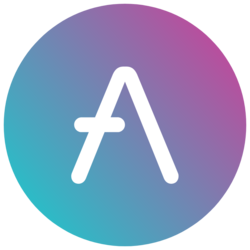Last week, Polygon MATIC
+2.69%
introduced the “type 1 prover” – a technology that can enable EVM-compatible chains to apply zero-knowledge proofs.
The type 1 prover is expected will be released later this year. It will be included in Polygon’s CDK (software stack), marking an advancement over the project’s previous Type 2 testing mechanism, which was incompatible with other EVM chains. “The type-1 prover can generate zero-knowledge proofs for any EVM chain without the need for hard forks or modifications to existing customers,” Brendan Farmer, co-founder of Polygon, told The Block.
Polygon Labs plans to use the prover to convert a wide range of blockchains, including sidechains and optimistic rollups, into validiums – a specialized form of Layer 2 networks that use zero-knowledge proofs for improved efficiency and lower transaction costs.
Validiums only store zk-proofs on the Ethereum mainnet, keeping the actual transaction data off-chain, backed by a data availability solution. This structure contrasts with ZK-Rollups, which must also publish proofs of app data to the Ethereum mainnet.
Farmer emphasized that projects can also choose to become full-fledged ZK rollups if they want to use their type-1 prover. Ultimately, it is up to the teams to make that decision, he clarified.
The transition to a ZK-based network
Moving to a ZK-based network (such as validiums or ZK rollups) can potentially provide benefits for Layer 2 projects, including eliminating the seven-day recording delay associated with optimistic rollup solutions (e.g. Optimism and Arbitrum).
This delay is a point of contention, according to Farmer, because it adds time and costs to users who rely on third-party bridges for transactions.
“It looks like tens of millions of dollars paid to third-party bridges, and when you look at what it would have cost to substantiate all the transactions based on those optimistic aggregations, it amounts to a few hundred thousand dollars,” Farmer added to it. “Users are forced to bear a lot of costs on Optimistic Layer 2s that are simply unnecessary, and an upgrade to a ZK-based network only fixes this.”
After the ZK transition, chains can be connected via Polygon’s interoperability protocol – the AggLayer – which promises interoperability and uniform liquidity for Layer 2s. The first version of the AggLayer is expected to release in February, allowing developers to connect blockchains.
The goal will be to ensure uniform security across modular and monolithic chains, including those within the Polygon ecosystem. AggLayer will be a critical part of Polygon 2.0, the next iteration of the Polygon network. Unlike typical interoperability solutions, it collects ZK evidence from all connected chains.




















































































where to get clomiphene tablets where can i get generic clomid without dr prescription cost generic clomiphene for sale cheap clomiphene pills buying clomiphene pill clomid for sale in usa can i order clomiphene online
The vividness in this serving is exceptional.
I’ll certainly bring back to read more.
purchase zithromax pills – buy flagyl 400mg online cheap metronidazole pill
rybelsus pills – cyproheptadine where to buy order periactin 4mg
purchase motilium sale – buy tetracycline 250mg generic cyclobenzaprine 15mg ca
azithromycin buy online – order zithromax 500mg online cheap order bystolic 20mg pill
amoxiclav tablet – https://atbioinfo.com/ order ampicillin generic
buy esomeprazole 40mg – anexamate order esomeprazole for sale
medex brand – https://coumamide.com/ how to get cozaar without a prescription
mobic 15mg without prescription – https://moboxsin.com/ mobic canada
buy generic prednisone 5mg – https://apreplson.com/ deltasone online buy
generic ed drugs – free samples of ed pills best otc ed pills
amoxicillin cost – combamoxi.com purchase amoxil generic
cenforce 100mg pill – click oral cenforce 100mg
buy ranitidine 300mg – purchase zantac generic buy ranitidine 150mg online
buy cialis in las vegas – buy generic cialis online cialis generic overnite shipping
More content pieces like this would create the web better. online
buy viagra discreetly – on this site 50 mg generic viagra
This is a theme which is in to my heart… Many thanks! Faithfully where can I lay one’s hands on the contact details in the course of questions? buy generic amoxicillin over the counter
I’ll certainly return to skim more. https://ursxdol.com/get-cialis-professional/
This website positively has all of the tidings and facts I needed adjacent to this participant and didn’t positive who to ask. https://prohnrg.com/
This is the kind of criticism I rightly appreciate. https://ondactone.com/product/domperidone/
I’ll certainly bring to read more.
https://doxycyclinege.com/pro/topiramate/
This is a topic which is in to my verve… Many thanks! Unerringly where can I upon the contact details in the course of questions? http://www.underworldralinwood.ca/forums/member.php?action=profile&uid=487613
order dapagliflozin 10mg for sale – https://janozin.com/ forxiga 10 mg usa
purchase xenical – janozin.com order xenical 60mg online cheap
Thanks for sharing. It’s first quality. http://www.dbgjjs.com/home.php?mod=space&uid=532998